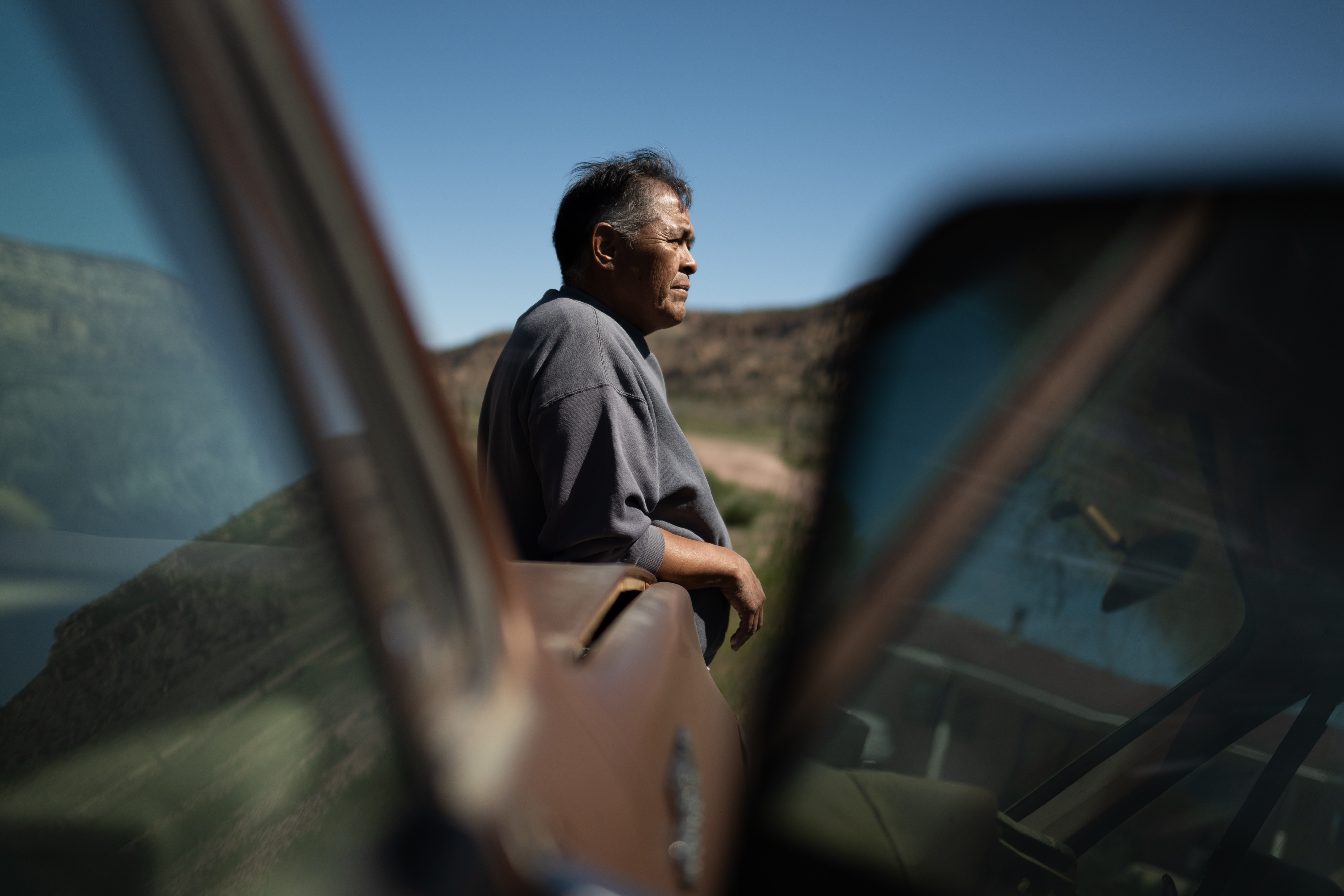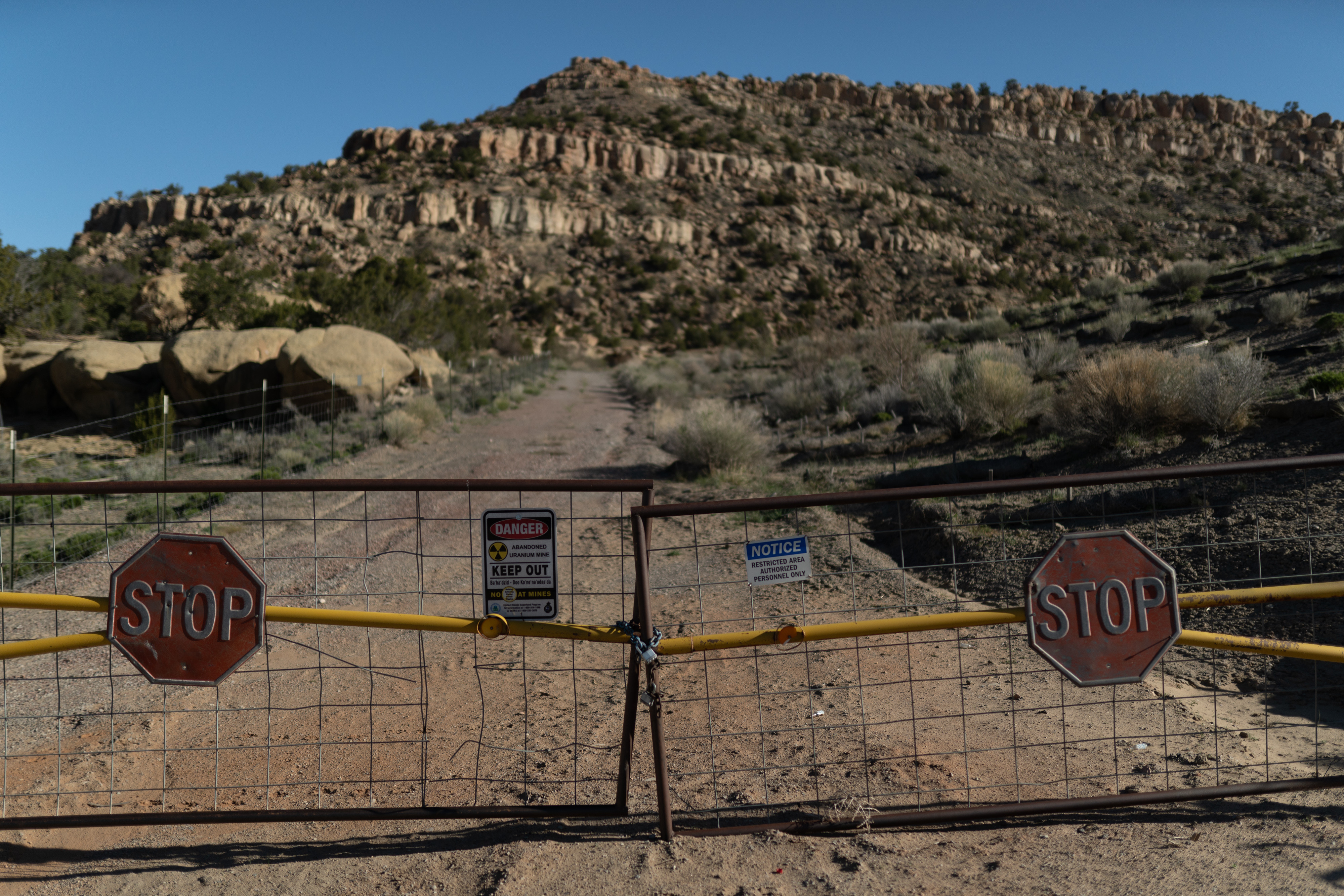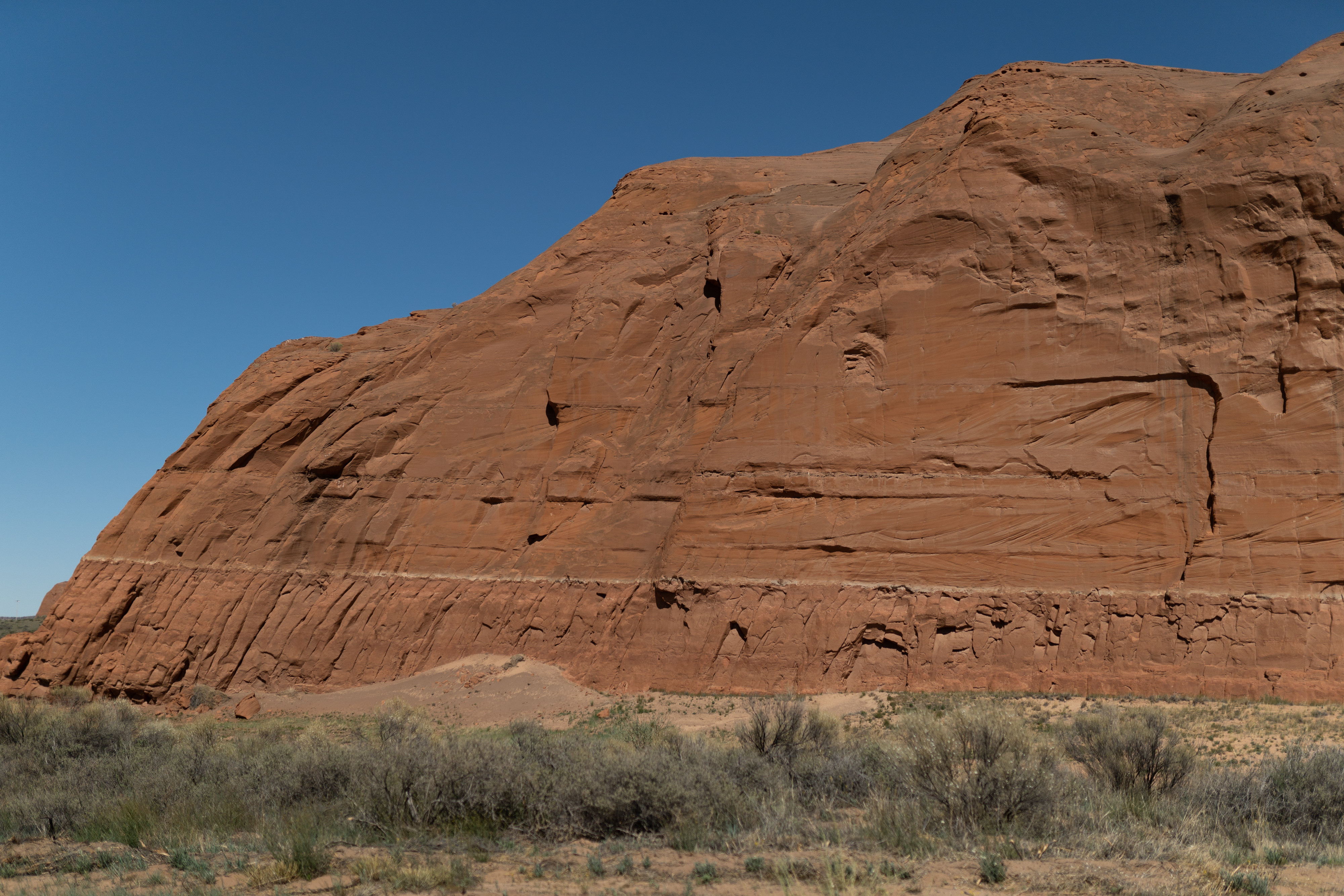Church Rock still radioactive? Yes, the Church Rock Uranium spill of 1979 remains the largest accidental release of radioactive materials in US history, and its effects linger today, raising concerns about ongoing contamination. At rockscapes.net, we understand the importance of safe and responsible landscaping practices, so let’s explore the current situation and what it means for you, providing solutions and understanding of geological materials. Discover how to create a safe and beautiful landscape with knowledge of radiation levels, rock formations, and uranium mining.
1. What Happened at Church Rock and Why Does It Matter?
The Church Rock Uranium Mill spill on July 16, 1979, was a catastrophic event where a tailings dam failed, releasing over 1,100 tons of uranium waste and 94 million gallons of radioactive water into the Rio Puerco. This river flows through Navajo lands, leading to widespread contamination that continues to affect the region. The accident released 7,000 times the radioactivity levels permitted in drinking water, according to the Nuclear Regulatory Commission, underscoring the magnitude of the disaster.
This incident is significant because it highlights the lasting impact of uranium mining and processing on the environment and public health. The legacy of Church Rock serves as a reminder of the need for stringent regulations, responsible corporate practices, and ongoing monitoring and remediation efforts in areas affected by uranium mining. The challenges faced by the Navajo Nation underscore the environmental justice issues associated with resource extraction and the importance of community involvement in cleanup efforts.
2. How Radioactive is Church Rock Today?
While radioactivity levels have decreased over the years, the area around Church Rock remains contaminated. A 1994 report by the U.S. Geological Survey indicated that daily pumping from underground mines released at least 300 times more uranium than the initial spill. According to the EPA, there are over 500 abandoned uranium mines, mill sites, and waste piles on Navajo Nation land that continue to contaminate water, soil, livestock, and housing. Even now, decades after the spill, the risk of exposure to radioactive materials persists.
This enduring contamination poses ongoing risks, including potential health problems for residents, contamination of water sources, and long-term environmental damage. Regular testing and remediation efforts are essential to mitigate these risks and ensure the safety and well-being of the affected communities.
3. What Are the Potential Health Risks of Radiation Exposure in Church Rock?
Long-term exposure to radiation from the Church Rock spill can lead to serious health problems. Residents have reported increased rates of kidney disease, bone cancer, and lung cancer, even among non-smokers. The EPA reports that exposure to radioactive materials can increase the risk of cancer and other health issues. Furthermore, concerns persist about the contamination of livestock and the potential for radioactive materials to enter the food chain.
These health risks underscore the importance of ongoing health monitoring and access to healthcare for affected communities. Additionally, raising awareness about the risks of radiation exposure and promoting safe practices can help minimize potential health impacts.
4. What Steps Are Being Taken to Clean Up the Church Rock Area?
Cleanup efforts at Church Rock have been slow and insufficient. According to the Southwest Research and Information Center, only 1% of solid radioactive waste was removed after the spill. The EPA is working to address the abandoned uranium mines on Navajo Nation land, but the process is complex and faces funding challenges. Despite these efforts, many residents feel that the cleanup has not been adequate and that their concerns have been ignored.
Improved oversight, increased funding, and community involvement are essential to ensure the effectiveness of cleanup efforts. Additionally, exploring innovative remediation technologies and strategies can help accelerate the process and minimize the long-term impact of contamination.
5. How Does the Church Rock Spill Compare to Other Nuclear Accidents?
The Church Rock spill is often compared to the Three Mile Island accident and the Chernobyl disaster. While Three Mile Island received more media attention and resulted in compensation for affected residents, the Church Rock spill released a larger amount of radiation. According to the EPA, the Church Rock spill is the largest in the US in terms of radiation released. The Chernobyl disaster was much larger in scale and impact, but Church Rock remains a significant event in the history of nuclear accidents.
Understanding the similarities and differences between these accidents can help inform strategies for preventing and responding to future incidents. Additionally, it is essential to recognize the unique challenges faced by communities affected by uranium mining and to ensure that they receive the resources and support they need to recover and rebuild.
6. What Can Residents Do to Protect Themselves from Radiation Exposure?
Residents can take several steps to protect themselves from radiation exposure in the Church Rock area. This includes avoiding contaminated water sources, testing water regularly, and minimizing contact with contaminated soil. The EPA also recommends limiting consumption of livestock that may have grazed in contaminated areas. Additionally, staying informed about cleanup efforts and participating in community meetings can help residents advocate for their health and safety.
Access to clean water, healthcare, and information are essential for empowering residents to protect themselves and their families. Additionally, promoting community-based monitoring programs can help identify and address potential sources of contamination.
7. What Role Did Uranium Mining Play in the Church Rock Disaster?
Uranium mining played a direct role in the Church Rock disaster. From 1944 to 1986, approximately 30 million tons of uranium ore were extracted from mines on Navajo Nation land. The mines were often poorly regulated, and workers were underprotected and uninformed about the dangers of radiation exposure. The Church Rock spill was a direct result of the failure of a tailings dam used to store waste from uranium processing.
This history underscores the need for stricter regulations and oversight of uranium mining operations to prevent future disasters. Additionally, it is essential to address the legacy of abandoned mines and to provide resources for communities affected by mining-related contamination.
 Larry King stands on his property next to his truck
Larry King stands on his property next to his truck
Larry King stands on his property next to his truck, highlighting the enduring impact of the Church Rock Uranium spill on the Navajo Nation.
8. What Are the Long-Term Environmental Impacts of the Church Rock Spill?
The long-term environmental impacts of the Church Rock spill are significant and far-reaching. Contamination of soil and water resources has affected plant and animal life, disrupting ecosystems and potentially impacting biodiversity. Radioactive materials can persist in the environment for decades, posing ongoing risks to human and ecological health. The EPA continues to monitor the area and implement remediation strategies to minimize these impacts.
Long-term monitoring and research are essential to fully understand the environmental consequences of the spill and to develop effective strategies for mitigating its impacts. Additionally, promoting sustainable land management practices can help restore and protect affected ecosystems.
9. What Legal Actions Have Been Taken in Response to the Church Rock Spill?
Despite the severity of the Church Rock spill, there has been limited legal recourse for affected residents. Unlike the Three Mile Island accident, where victims received compensation, those affected by the Church Rock spill have not been adequately compensated. Some legal actions have been taken against the United Nuclear Corporation, but the outcomes have been limited. The New Mexico Environmental Law Center continues to advocate for the rights of affected communities and to seek legal remedies for the damages caused by the spill.
Strengthening environmental laws and regulations, improving access to legal representation for affected communities, and holding responsible parties accountable for their actions are essential to ensure justice for victims of environmental disasters.
10. How Can Rockscapes.net Help You Create a Safe Landscape?
At rockscapes.net, we are committed to providing you with information and resources to create a safe and beautiful landscape. We offer detailed information about different types of rocks, including their geological properties and potential risks. According to research from Arizona State University’s School of Earth and Space Exploration, in July 2025, understanding the composition of rocks can help you make informed decisions about their use in your landscape. Our team can help you select materials that are safe for your family, pets, and the environment. We provide guidance on responsible landscaping practices, including proper handling and disposal of materials. Visit rockscapes.net to explore our resources and discover how to create a landscape that is both stunning and safe.
By choosing rockscapes.net, you can benefit from:
- Expert advice: Our team can help you select the right materials and design a landscape that meets your needs.
- Quality products: We source our rocks from reputable suppliers and ensure they meet the highest standards for safety and sustainability.
- Peace of mind: With our guidance, you can create a landscape that is beautiful and safe for your family and the environment.
Don’t let concerns about radioactivity prevent you from enjoying the beauty of natural stone in your landscape. Let rockscapes.net help you create a safe and stunning outdoor space.
11. The Ongoing Challenges and Future Outlook for Church Rock
Despite the years that have passed since the Church Rock disaster, numerous challenges persist. These challenges include the lack of comprehensive health studies, the slow pace of cleanup efforts, and the ongoing contamination of water sources. There is a need for greater collaboration between government agencies, community organizations, and responsible parties to address these challenges effectively.
Looking to the future, there is hope for progress through continued research, innovative remediation technologies, and increased community involvement. By learning from the mistakes of the past and working together, it is possible to create a safer and healthier environment for the residents of Church Rock and other communities affected by uranium mining.
12. Understanding Uranium and Its Radioactivity
Uranium is a naturally occurring radioactive element found in rocks, soil, and water. Its radioactivity comes from the spontaneous decay of its atoms, releasing energy in the form of alpha, beta, and gamma radiation. While uranium is present in low concentrations in many environments, mining and processing can concentrate it, increasing the risk of exposure.
According to the World Nuclear Association, uranium is primarily used as fuel in nuclear power plants, but it also has other industrial and medical applications. Understanding the properties and behavior of uranium is essential for managing its risks and ensuring the safety of workers and the public.
13. How Radioactivity is Measured and What Levels Are Considered Safe?
Radioactivity is measured in units such as becquerels (Bq) and sieverts (Sv). Becquerels measure the rate of radioactive decay, while sieverts measure the dose of radiation absorbed by the human body. Safe levels of radiation exposure vary depending on the source and duration of exposure.
According to the International Commission on Radiological Protection, the annual dose limit for members of the public is 1 millisievert (mSv). Occupational exposure limits are higher, but it is essential to minimize exposure whenever possible. Regular monitoring and testing can help ensure that radiation levels remain within safe limits.
14. The Role of the EPA in Monitoring and Regulating Radioactivity
The Environmental Protection Agency (EPA) plays a crucial role in monitoring and regulating radioactivity in the United States. The EPA sets standards for radiation exposure, monitors environmental radiation levels, and oversees the cleanup of contaminated sites. According to the EPA’s website, the agency also works to educate the public about the risks of radiation exposure and how to protect themselves.
The EPA’s efforts are essential for protecting public health and the environment from the harmful effects of radiation. By enforcing regulations and promoting responsible practices, the EPA helps ensure that radiation is managed safely and effectively.
15. Navajo Nation’s Perspective on the Church Rock Legacy
The Church Rock spill holds a unique and deeply significant place in the history of the Navajo Nation. It symbolizes the environmental injustices and health disparities faced by Indigenous communities as a result of resource extraction. According to a 2017 Reveal article, many Navajo residents continue to suffer from health problems and environmental contamination related to uranium mining.
For the Navajo Nation, the Church Rock legacy is a reminder of the need for self-determination, environmental stewardship, and cultural preservation. By sharing their stories and advocating for their rights, the Navajo people are working to create a more just and sustainable future for themselves and future generations.
16. Impact on Livestock and Agriculture in Church Rock
The Church Rock spill has had a devastating impact on livestock and agriculture in the affected areas. Contamination of water and soil has led to health problems in livestock, including birth defects and premature death. According to community members, butchered animals have exhibited unusual symptoms, such as yellow fat, raising concerns about the safety of the food supply.
Agricultural practices have also been affected, with some farmers unable to use their land due to contamination. The long-term consequences of the spill on livestock and agriculture continue to pose challenges for the community and highlight the need for sustainable remediation strategies.
 A road to a Superfund site in New Mexico blocked by a ‘KEEP OUT’ sign
A road to a Superfund site in New Mexico blocked by a ‘KEEP OUT’ sign
A road to a Superfund site in New Mexico blocked by a ‘KEEP OUT’ sign, symbolizing the ongoing restrictions and potential hazards in the Church Rock area.
17. Scientific Studies and Research on the Effects of the Spill
Despite the significance of the Church Rock spill, there have been relatively few comprehensive scientific studies on its effects. One of the few government studies, a 1983 report from the New Mexico government, concluded that Rio Puerco water “may be hazardous if used over several years as the primary source of drinking water, livestock water, or irrigation water.”
More recently, researchers like Tommy Rock have uncovered uranium contamination in Rio Puerco water, linking it to the Church Rock spill. Continued scientific research is essential to fully understand the long-term health and environmental impacts of the spill and to inform effective remediation strategies.
18. Personal Stories and Testimonials from Church Rock Residents
The impact of the Church Rock spill is best understood through the personal stories and testimonials of those who have been affected. Residents like Larry King have witnessed the devastating consequences of the spill firsthand, including the loss of livestock, health problems, and the disruption of traditional ways of life.
These stories provide a powerful reminder of the human cost of environmental disasters and the importance of listening to the voices of affected communities. By sharing their experiences, residents are helping to raise awareness and advocate for justice and healing.
19. The Ethical and Moral Dimensions of the Church Rock Disaster
The Church Rock disaster raises important ethical and moral questions about corporate responsibility, environmental justice, and the treatment of Indigenous communities. The failure of the United Nuclear Corporation to properly maintain the tailings dam and the lack of adequate cleanup efforts raise concerns about the company’s ethical obligations.
The fact that the Church Rock spill has received less attention and compensation than other nuclear accidents raises questions about environmental justice and the equitable treatment of all communities. Addressing these ethical and moral dimensions is essential for preventing future disasters and promoting a more just and sustainable world.
20. Resources for Further Information and Support
If you are interested in learning more about the Church Rock spill and its effects, there are many resources available. These include government reports, scientific studies, news articles, and community organizations. Some useful resources include the EPA’s website, the Southwest Research and Information Center, and the Eastern Navajo Diné Against Uranium Mining (ENDAUM).
You can also find support and information from organizations that provide assistance to communities affected by uranium mining. By staying informed and engaged, you can help raise awareness and advocate for solutions to the challenges facing Church Rock and other affected communities.
FAQ: Is Church Rock Still Radioactive?
1. What was the Church Rock Uranium Mill spill?
The Church Rock Uranium Mill spill was a catastrophic event on July 16, 1979, where a tailings dam failed, releasing over 1,100 tons of uranium waste and 94 million gallons of radioactive water into the Rio Puerco, leading to widespread contamination.
2. Is the Church Rock area still radioactive today?
Yes, the area around Church Rock remains contaminated, although radioactivity levels have decreased over the years. According to the EPA, there are over 500 abandoned uranium mines, mill sites, and waste piles on Navajo Nation land that continue to contaminate water, soil, livestock, and housing.
3. What are the health risks associated with radiation exposure in Church Rock?
Long-term exposure to radiation can lead to increased rates of kidney disease, bone cancer, and lung cancer, even among non-smokers. The EPA reports that exposure to radioactive materials can increase the risk of cancer and other health issues.
4. What is being done to clean up the Church Rock area?
The EPA is working to address the abandoned uranium mines on Navajo Nation land, but cleanup efforts have been slow and insufficient. The Southwest Research and Information Center reported that only 1% of solid radioactive waste was removed after the spill.
5. How does the Church Rock spill compare to other nuclear accidents like Three Mile Island and Chernobyl?
While Three Mile Island received more media attention and resulted in compensation for affected residents, the Church Rock spill released a larger amount of radiation. The Chernobyl disaster was much larger in scale and impact, but Church Rock remains a significant event in the history of nuclear accidents.
6. What can residents do to protect themselves from radiation exposure in Church Rock?
Residents can avoid contaminated water sources, test water regularly, and minimize contact with contaminated soil. The EPA also recommends limiting consumption of livestock that may have grazed in contaminated areas.
7. How did uranium mining contribute to the Church Rock disaster?
The Church Rock spill was a direct result of the failure of a tailings dam used to store waste from uranium processing. From 1944 to 1986, approximately 30 million tons of uranium ore were extracted from mines on Navajo Nation land, highlighting the direct link between uranium mining and the disaster.
8. What are the long-term environmental impacts of the Church Rock spill?
The long-term environmental impacts include contamination of soil and water resources, affecting plant and animal life, disrupting ecosystems, and posing ongoing risks to human and ecological health.
9. What legal actions have been taken in response to the Church Rock spill?
There has been limited legal recourse for affected residents, unlike the Three Mile Island accident where victims received compensation. Some legal actions have been taken against the United Nuclear Corporation, but the outcomes have been limited.
10. Where can I find more information and support regarding the Church Rock spill?
You can find more information and support from resources such as the EPA’s website, the Southwest Research and Information Center, and the Eastern Navajo Diné Against Uranium Mining (ENDAUM). These organizations provide valuable information and assistance to communities affected by uranium mining.
Conclusion: Navigating Landscapes Responsibly
The legacy of Church Rock serves as a stark reminder of the lasting consequences of environmental disasters. While the area remains radioactive, understanding the risks and taking proactive steps can help mitigate potential health and environmental impacts.
At rockscapes.net, we are dedicated to providing you with the knowledge and resources you need to create a safe and beautiful landscape. We encourage you to explore our website, learn about different types of rocks, and discover how to design a landscape that is both sustainable and stunning.
Whether you’re a homeowner, landscape designer, or anyone interested in creating a beautiful outdoor space, rockscapes.net is your trusted resource for information and inspiration. Contact us today at 1151 S Forest Ave, Tempe, AZ 85281, United States, call +1 (480) 965-9011, or visit our website at rockscapes.net to learn more. Let us help you transform your landscape into a safe and stunning oasis.
 A rock face near Church Rock
A rock face near Church Rock
A rock face near Church Rock, illustrating the natural beauty of the landscape alongside the somber reminder of the uranium spill.
